When you step into a kitchen, your eyes are often drawn to sleek appliances, gleaming countertops, and stylish cabinetry. However, there’s one essential element that often goes unnoticed yet plays a crucial role in daily life: the kitchen sink.
This humble fixture is more than just a basin for washing dishes or rinsing vegetables. It’s a focal point of kitchen design, a workhorse that endures constant use, and a reflection of both functionality and personal style. But what are kitchen sinks made of?
Kitchen sinks come in a surprising array of materials, evolving with technology and design trends. These material choices significantly influence the sink’s durability, upkeep, and visual appeal.
In this article, we’ll dive beneath the surface to explore the various materials used in crafting today’s kitchen sinks. Get ready to see kitchen sinks in a new light, whether you’re renovating or just curious.
What Are Kitchen Sinks Made Of?
Kitchen sinks come in a wide variety of materials, each with its own unique properties. Let’s explore the most common types of sink materials, looking at their appearance, price, advantages, and disadvantages. By understanding what kitchen sinks are made of, you’ll be better equipped to choose the perfect sink for your home.
1. Stainless Steel
Stainless steel sinks are a popular choice in many kitchens. They’re made from a mix of steel, chromium, and nickel, giving them a sleek, modern look that fits well in various kitchen styles. These sinks are usually affordable, though prices can vary based on quality and thickness. Thinner steel (higher gauge) is generally cheaper.
One of the big pluses of stainless steel sinks is their durability and ease of cleaning. They resist stains and bacteria, and they don’t chip or crack easily. However, they can be noisy when water hits them and may show water spots and scratches over time. Some people also find their look too industrial for their taste.
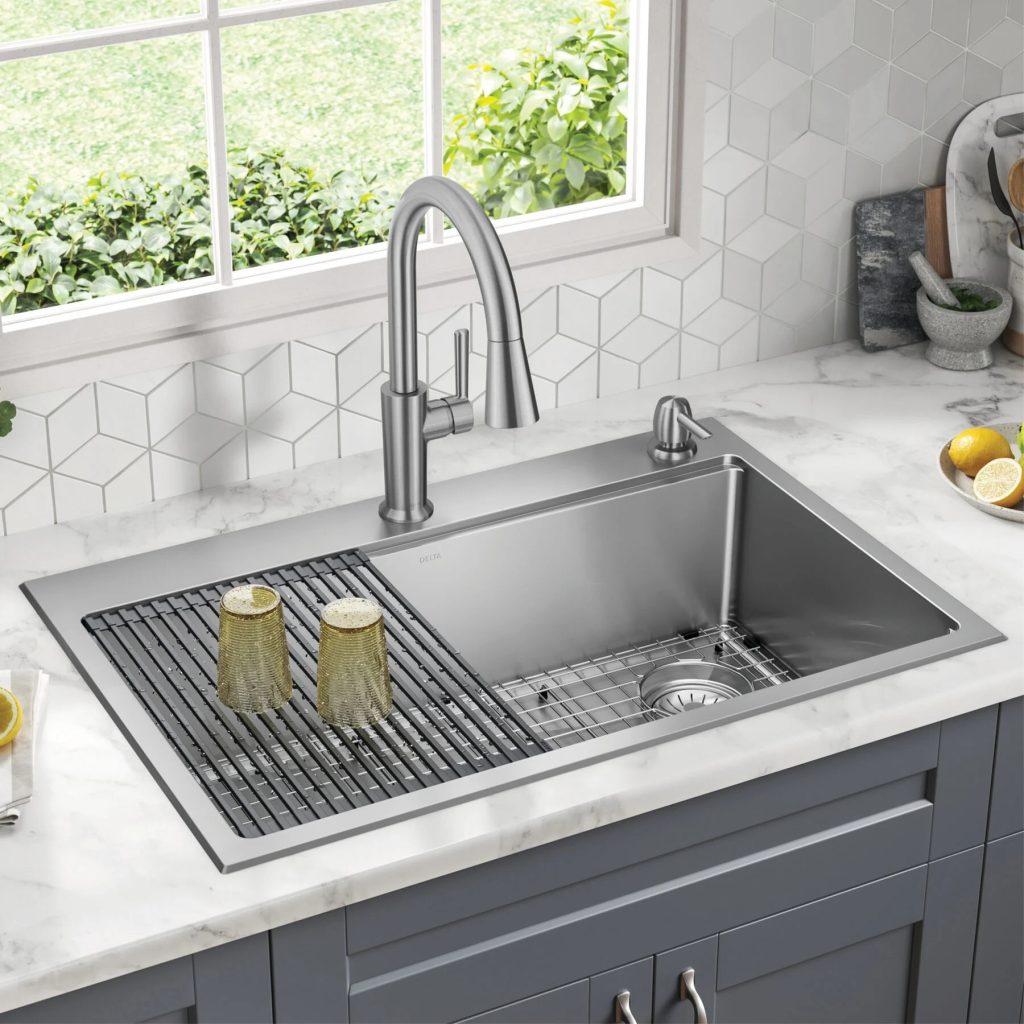
2. Cast Iron
Cast iron sinks have been around for many years. They’re made of iron coated with enamel, giving them a classic, timeless look. You can find them in many colors, but white is the most common. Price-wise, they sit in the mid-range, costing more than basic stainless steel but less than some high-end materials.
These sinks are very durable, resisting chips and scratches well. They also retain heat nicely, which is great for washing dishes. On the downside, they’re very heavy and may need extra support under the counter.
But be extra careful when washing something heavy. If you drop something heavy in the sink, the enamel can chip. Over time, stains or discoloration may develop, affecting the overall sink appearance.
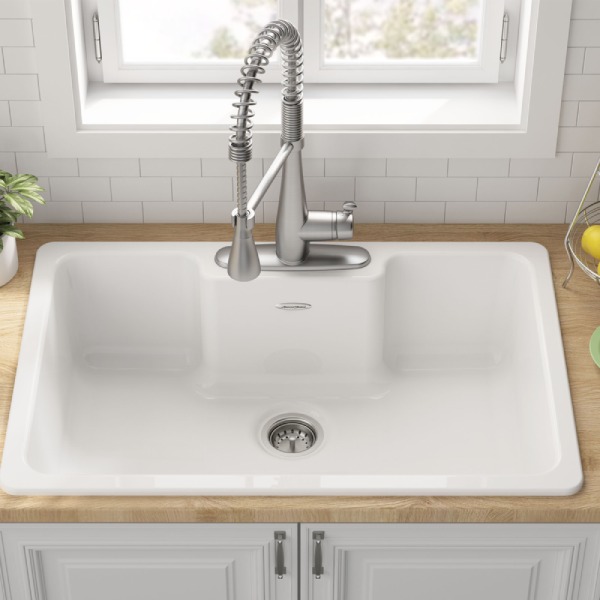
3. Composite Granite
Composite granite sinks are made from a mix of granite dust and acrylic resins. They have a matte finish and come in a variety of colors, often with a speckled or textured look that mimics natural stone. These sinks fall in the mid to high price range.
One of the big advantages of composite granite sinks is their durability. They resist scratches well and don’t show water spots easily. However, they can be damaged by extreme heat, and some harsh chemicals can harm the surface. They may also stain if not sealed properly.
The texture may require more frequent cleaning to maintain its appearance, and the initial cost can be relatively high compared to other sink materials. Proper sealing is essential to prevent staining and preserve the sink’s longevity.
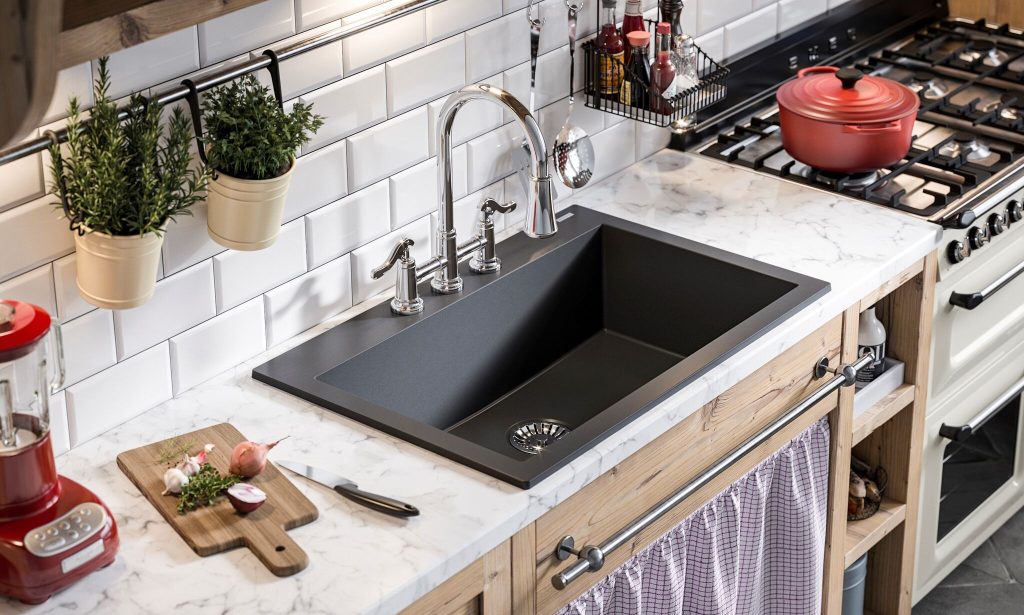
4. Fireclay
Fireclay sinks are made by firing clay at very high temperatures, resulting in an extremely hard and durable material. They have a smooth, glossy finish and often come in white or off-white, though some manufacturers offer other colors.
These sinks are on the higher end of the price range. Fireclay sinks are known for their durability. They resist chips and scratches well and don’t stain easily. They also have a timeless, classic look. However, they are very heavy and may need extra support.
Just as cast iron, this material type can be damaged if you drop heavy items in them, and they’re more expensive than many other options. Fireclay sinks can be prone to cracking if subjected to sudden, severe temperature changes. Regular maintenance and gentle handling can help preserve their appearance and functionality.
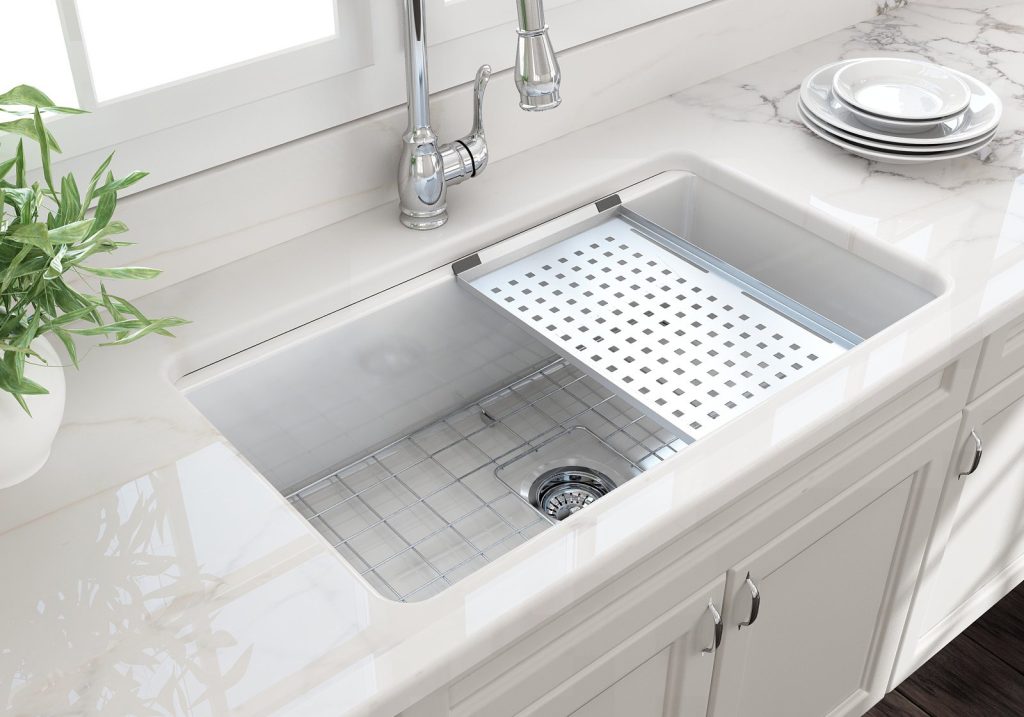
5. Quartz Composite
Similar to composite granite, quartz composite sinks are made from quartz dust and resin. They have a smooth, matte finish and come in many colors, often with a more uniform look than composite granite. These sinks are in the mid to high price range.
Quartz composite sinks are very durable and resist scratches well. They don’t show water spots easily and come in a variety of colors. However, like composite granite, they can be damaged by extreme heat and some harsh chemicals. Their modern look might not suit all kitchen styles.
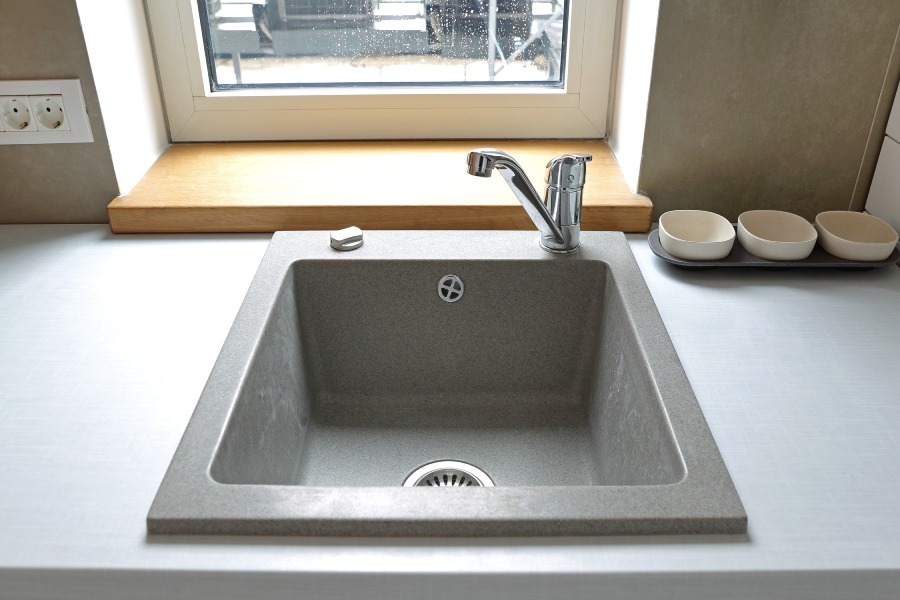
6. Copper
Copper sinks offer a unique and striking look. These objects are made from pure copper or copper alloys. They have a warm, reddish-brown color. Over time, they develop a patina, which changes their appearance as they age. These sinks are often considered a luxury option and are priced accordingly.
Copper sinks have natural antibacterial properties and are durable and long-lasting. Their unique look can be a real eye-catcher in the kitchen. However, they require special care to maintain their appearance and can dent if hit with heavy objects. The changing patina may not appeal to everyone.

7. Porcelain
Porcelain sinks are made from clay fired at high temperatures and then coated with a porcelain enamel. They have a smooth, glossy finish and often come in white, though other colors are available. These sinks are mid-range in price.
Porcelain sinks are easy to clean and resist stains well. They come in many colors and have a classic, timeless look. However, they can chip or crack if hit with heavy objects, and dark-colored items can leave marks on white porcelain. They may also show scratches over time.
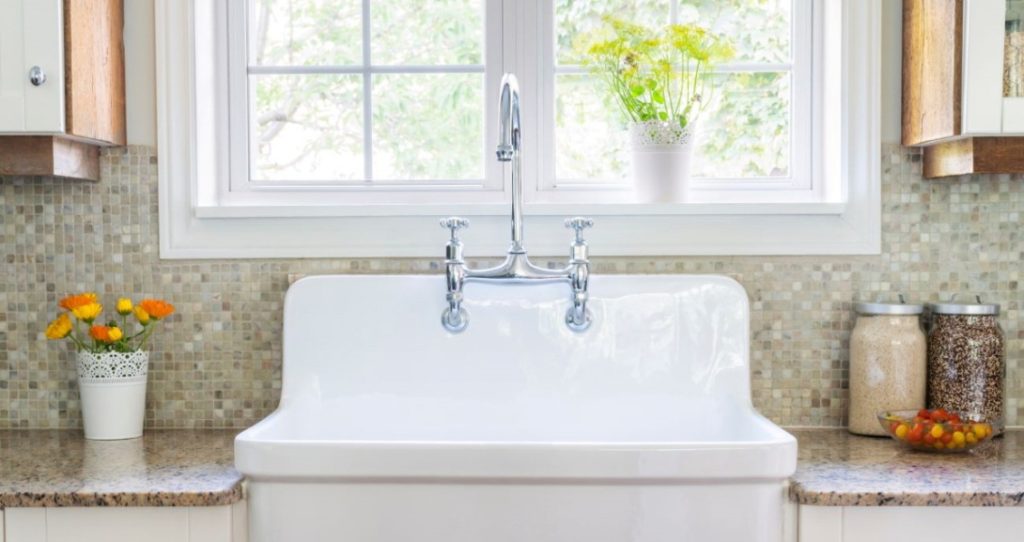
8. Natural Stone
Natural stone sinks are carved from single pieces of stone, such as granite, marble, or soapstone. They offer a unique, natural look with varied colors and patterns – no two sinks are exactly alike. These sinks are often the most expensive option.
The main draw of natural stone sinks is their luxurious, one-of-a-kind look. They’re very durable and can increase the value of your home. However, they require regular sealing to prevent stains, are very heavy, and can be damaged by acidic substances.

9. Solid Surface
Solid surface sinks are made from acrylic and polyester materials. They have a smooth, uniform look and come in many colors. They can even be made to look like natural stone. These sinks fall in the mid to high price range. One big advantage of solid surface sinks is that they’re non-porous and resist stains.
Minor scratches can be sanded out, and they can be seamlessly integrated with countertops of the same material. However, they can be damaged by extreme heat and may scratch more easily than some other materials. Some people also find their looks too artificial.
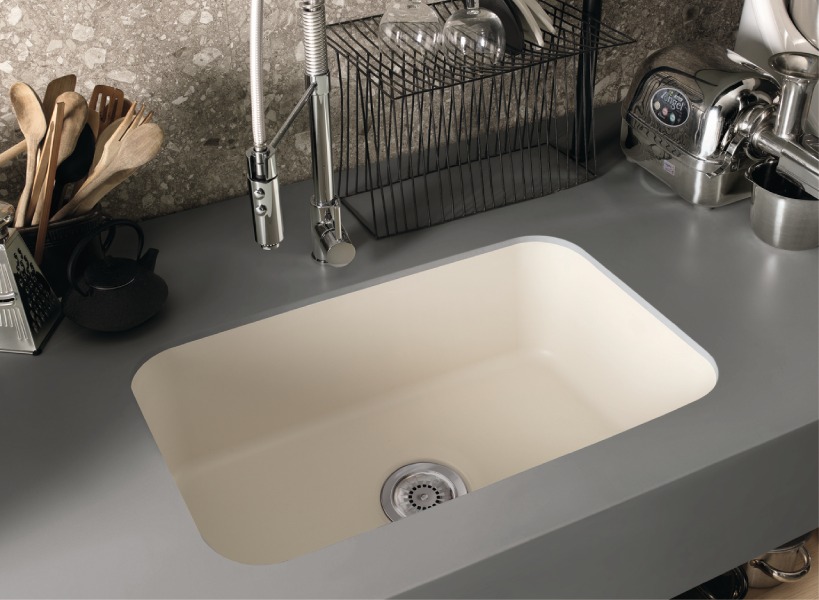
Conclusion
The world of kitchen sink materials is diverse and ever-evolving, offering homeowners a wide array of choices to suit their needs, preferences, and budgets. From the popular and practical stainless steel to the luxurious and unique natural stone, each material brings its own set of advantages and challenges.
In this exploration of what are kitchen sinks made of, we’ve discovered that several factors play crucial roles in the decision-making process. These include durability, aesthetics, maintenance requirements, and cost.
As kitchen design continues to advance, we may see even more innovative materials and technologies emerge. Ultimately, the perfect kitchen sink is one that not only complements your space but also enhances your daily life. It should make those countless hours spent at the sink more enjoyable and efficient.


